Worlds within the thistles
Ladybirds and aphids, and worlds beneath our notice
CW: insects
Last week, I noticed a patch of thistles near my flat was covered in ladybirds—literally dozens of them. When I returned a day or two later to examine it more closely, I realised that there were so many of them because the thistles were swarming with tiny, sap-sucking aphids—of which ladybirds are one of the principal predators.
This encounter was a reminder of all the worlds around us that often pass unnoticed. Life is all around us. Even in the city, it thrives in the cracks: on the sides of roads, on unused land and wastelands, on and around buildings. Creatures we bemoan as pests are simply surviving in the world that we created—I love Michelle Tea’s “Pigeon Manifesto” for an impassioned defense of these much-maligned birds.
As a gardener, it was also a reminder that aphids—insects that have wreaked their havoc on many a plant I have tried to grow—are a foundational part of the garden ecosystem, a source of food to so many other creatures. And aphids are only at their worst when you try to sever plants from these ecosystems—growing them indoors, for example.
Outwith their role as prey for ladybirds and hoverflies, and as pests in the garden, aphids are fascinating creatures. They suck sap from plants, secreting a sticky, sugary liquid called honeydew out their rear end. Ants absolutely love this secretion, so they will actually farm aphids: herding them, protecting them from predators, and harvesting this sweet, sweet liquid from their butts.
The reproductive proccess of aphids is equally fascinating. The vast majority of aphids are female, and they primarily reproduce through parthenogenesis. That is, they give live birth to genetically identical clones of themselves. These can be either with or without wings, depending on whether they need to colonise new plants or areas. Furthermore, the young that they give birth to, are in fact born pregnant. It has been estimated that a single aphid, under optimal conditions, could theoretically produce 600 billion descendents in a single season.1
In the autumn, some male aphids are produced, also genetically identical but with one fewer chromosome. The aphids will then reproduce sexually and lay eggs, which allowing them to survive over the winter before once again reproducing in vast numbers in the spring.
I invite you to slow down and take notice of your surroundings when you go outside or for a walk. How many vibrant worlds full of life—like the aphids and ladybirds in the thistle patch—pass unnoticed as we go about our lives?
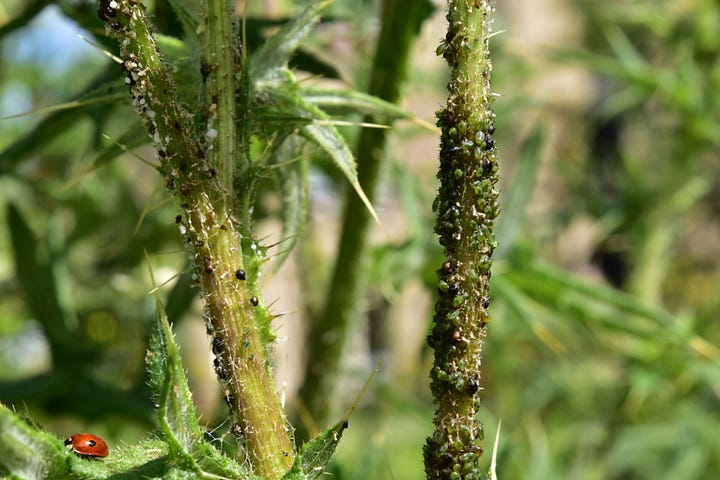
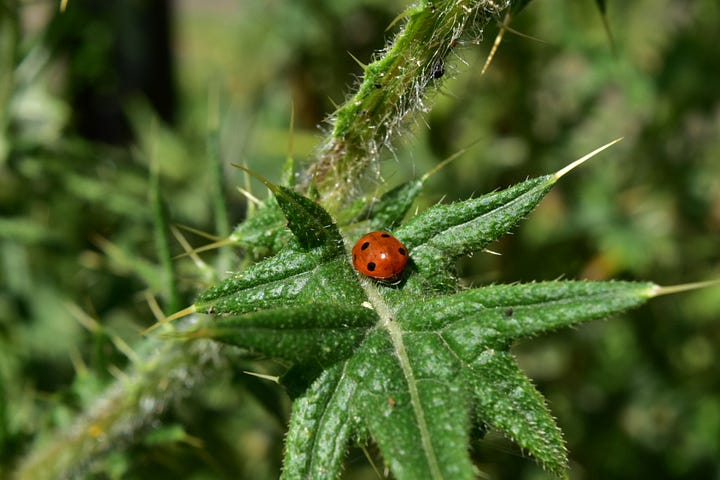
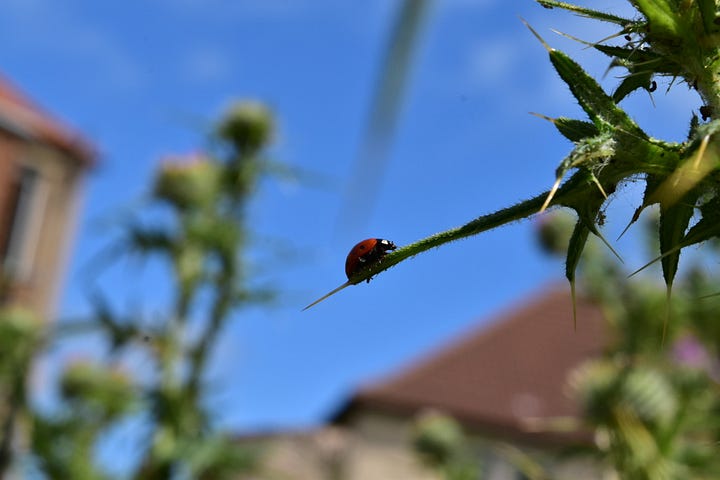
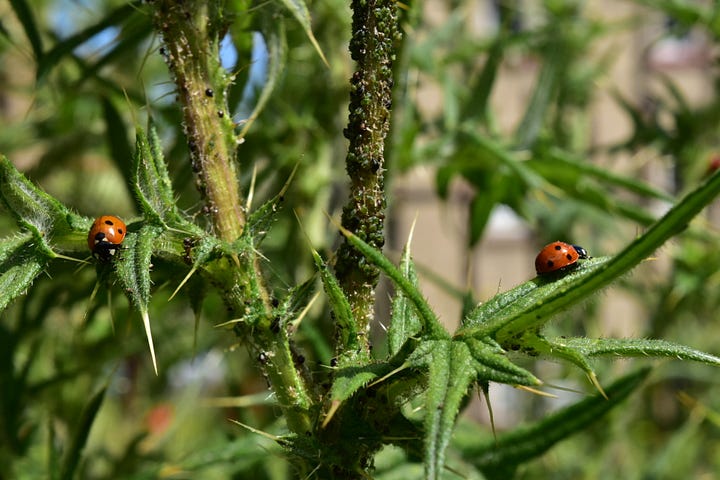
Other miscellany:
It’s been a while since I’ve posted here! Nice to be back 😊 It’s been a mix of things: chronic illness stuff, being busy with other things, overwhelmed by so many things going on in the world, and just not in the right headspace to write.
I haven’t really had capacity to offer tarot readings for a while (see above), and I’m not sure if I will in the near future, but I will listen to my body and see how I’m doing.
I’m not sure what shape this newsletter will take going forward. I’d like to write more regularly, and it’s nice to write about whatever I feel called to (insect ecosystems, for example) without necessarily having to tie it in with tarot (although I still have many feelings on tarot!) I’m considering renaming it to something like “Mina’s Miscellany” to fit this wider focus.
One of my best friends is running a crowdfunder for her dream wheelchair. Even if you can’t contribute, would really appreciate if you could share on social media and in your networks.
Remember that there is still a horrific genocide going on in Gaza. We all need to be doing more. Even small things, like donating to crowdfunders of people and families who are there or have been displaced, makes such a big difference to people’s lives.
I have not, and will never use, generative AI for any content in this newsletter or anything else I create. I just love em-dashes.
All photos are mine.


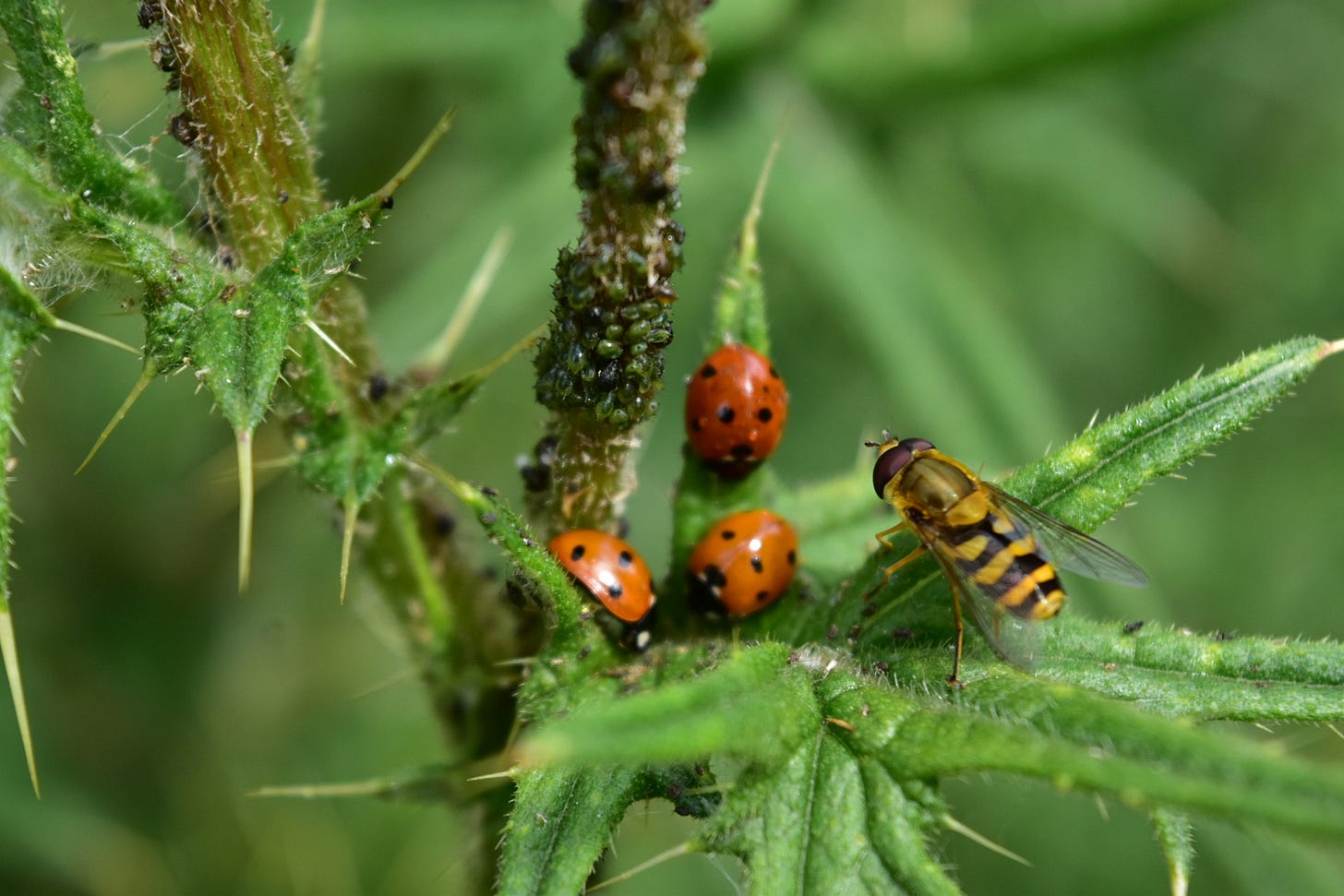
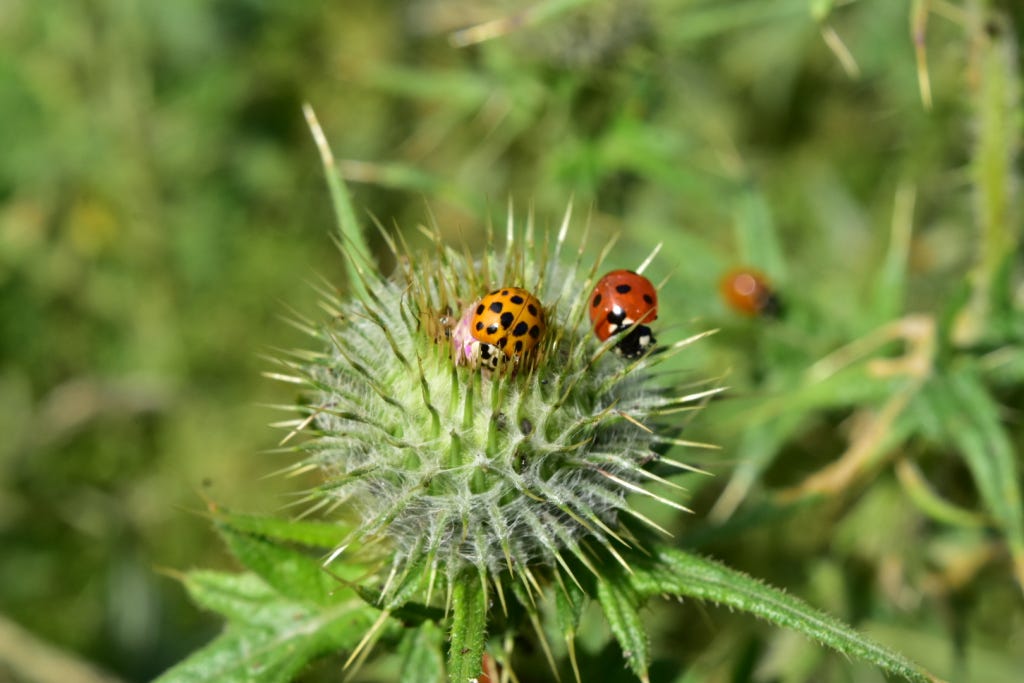
Excellent post! I love ladybirds and they're everywhere around Edinburgh this year, I've never seen so many since the hot summer of 1976.